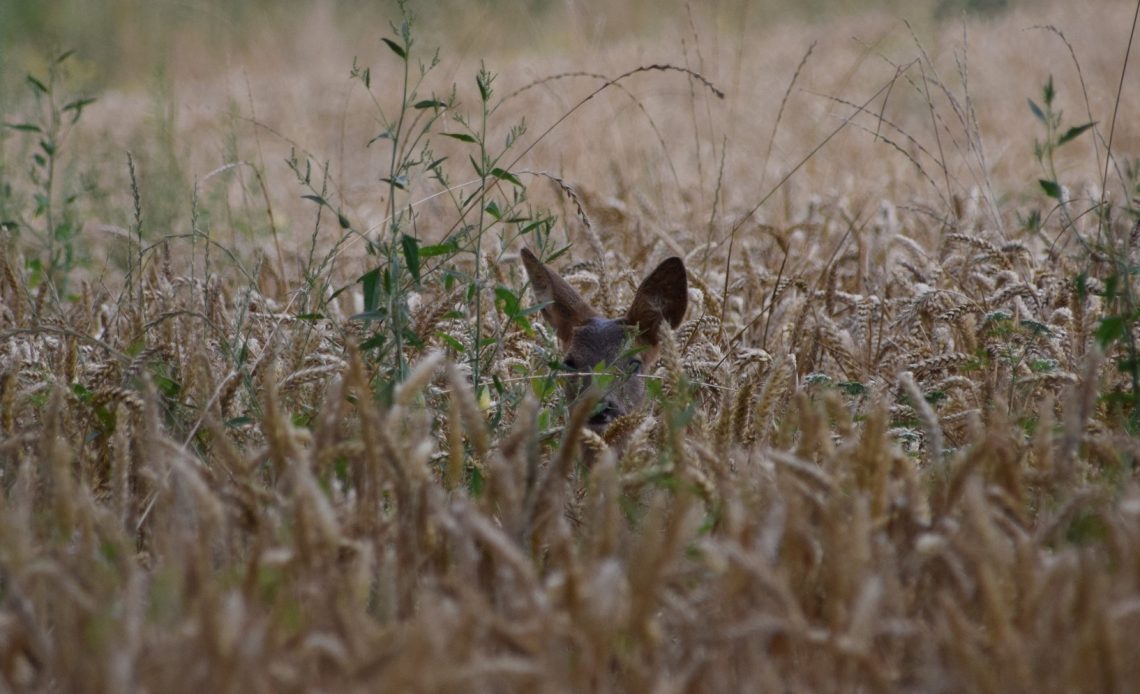

We’re here to help! Wild Yards is a completely free website that is 100% dedicated to helping you create a wildlife-friendly, sustainable yard. Read more
WildYards is reader-supported. When you buy a product through a link on our site, we may earn a comission. Every product is independently selected by our (obsessive) editors and our reviews are unbiased and objective. Read more about our mission or our privacy policy.
Wheat is the backbone of many animals’ diets, including our own. As humans, we have commonly used wheat for centuries in our everyday food production and continue to do so. It can be easily grown in large quantities, boasts a long list of health benefits, and can keep growing, even in the colder months. But, do deer eat wheat, too?
Deer will devour wheat in large quantities. They can commonly destroy entire crops at worst! However, for those who are looking to attract more deer to their area, wheat can be an invaluable resource.
Why is wheat good for deer?
Various types of wheat, such as that grown during the winter, can be fantastic protein sources. What is more, hardier types of wheat also prove to be extremely easy to digest.
As deer are ruminant animals, they rely and thrive on foodstuffs that are easy on their stomachs. Their rumens are organs that help to produce digestive microbes. As wheat is easy to digest, it is very unlikely to ‘clog up’ a deer’s system, unlike other less nutritional foodstuffs such as hay – and even grass.
Deer will happily munch on wheat, and it is certainly regarded as being healthier for them than plain grass (or other types such as ryegrass). Therefore, it’s a prominent attractant for those of us welcoming deer to our yards, and a point of contention for farmers trying to protect the harvest.
Do deer prefer wheat or oats?
Generally speaking, deer prefer oats. They prefer the taste, and although they can be strong and hardy crops, they generally die off before wheat does – making it a slightly rarer treat.
However, deer are never likely to turn their snouts up at wheat if it is available. Both wheat and oats are proven to be good for feeding local deer, though do take caution – as in some cases, especially during winter, it’s not always advisable to disrupt deer’s digestive cycles.
On top of this, it may be illegal to feed deer in your state. Always make sure to check the local laws before you start attracting these animals, or even before you simply offer them a snack.
Will wheat make a good food plot for deer?
Wheat is relatively easy to grow and does not require much attention on your part. Moreover, it can grow very tall, meaning that no matter where the food plot is, the deer will likely feel safe enough to come and eat from it. It’s therefore a fantastic resource for attracting deer without having to use bait.
If you are interested in making the perfect food plot, try to grow a variety of foodstuffs – deer will eat just about anything if hungry enough, but they do have a particular palate. What’s more, this will help to attract more deer and will give them more of the nutrients they require.
Fruit such as oranges, watermelon, and raspberries, as are wild tree offerings such as beechnuts and acorns. You might also interest deer by serving up a little celery, which they love thanks to its bland, inoffensive taste.
How do I protect my wheat crops from deer?
One of the best ways to protect crops from wildlife – though perhaps not the kindest – is electric fencing. This is an ideal solution as it can be moved when necessary, turned off when you are working on the crops, and will deter most animals for a long time.
If you are worried about harming animals, some farmers even note that leaving it on for a few weeks is enough to deter the animals in the area – then, you can turn it off. Animals will not likely try to enter, as they’ll remember the perimeter is normally live.
Even one night of deer visitation can destroy a crop, so if you are planning on placing an electric fence around your crops, try to keep it there for as long as possible. The cost of deer foraging on farming is likely higher than you might expect!
However, electric fences are also particularly expensive to buy and install – which is where infrared technology could become useful. Simply placing a few infrared lights and speakers around your crop should deter deer and other wildlife from intruding on your harvest.
If you have a garden and are growing a small amount of wheat, a general, non-harmful deterrent is to set up double fences – one in front of another – to prevent deer from visiting. Grow your wheat as close to your property as you can – and it may even be good to set up wind chimes to help deter deer through unexpected noises.
Otherwise, growing wheat for deer can be a great way to make sure they are fully nourished. However, only do so in warm seasons, and if you have the legal right to do so.
